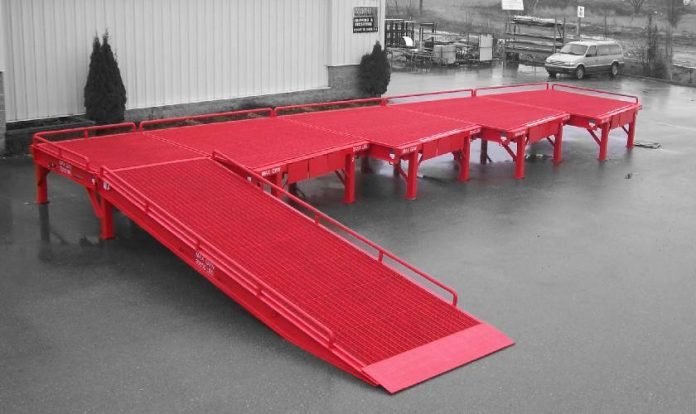Last Updated on February 23, 2024 by Nasir Hanif
If you are planning to travel to another country by yourself, you need to know how big of a loading ramp you will need. When you are installing a new dock or boat lift at your home, you may think that the first thing to consider would be the size of the dock. However, one of the most important things to consider is how big your boat is, and more importantly, how much room you will need on the loading ramp so that you can comfortably load and unload all of your gear without damaging anything.
Table of Contents
Considerations when choosing the right size
Know what your transportation needs are. This helps determine how big a ramp you need. Ramps come in different sizes for different applications and vehicles.
First, it depends on what you’re planning to load. If you’re using your ramp to load pets or kids, 4-foot ramps are fine. The U.S. Department of Labor recommends that a 6-foot ramp be used for loads up to 500 pounds but there are no regulations as to how wide a ramp must be. In general, longer ramps make it easier to get heavy equipment into your vehicle; plus they reduce strain on your back and knees. When deciding between two sizes, remember that while wider ramps are better for bigger vehicles, smaller ones can fit in tighter spaces. When choosing between two different widths, consider where you plan to store your ramp when not in use: A 3-footer will fit easily into most trunks and some garages; 5 feet will need more space.
The Importance of a Large Loading Ramp
Loading docks are one part of a commercial building that tend to take a bit more abuse than others. For instance, even in seemingly well-maintained facilities with conscientious employees, cargo can be thrown or dropped without much thought as to where it will land. The result is Damage to your dock and its surrounding area. Some things might not seem like such a big deal at first, but they’ll end up costing you money later down the road when it comes time for repair or replacement. It’s easy enough to prevent damage before it happens by investing in proper dock accessories, including large loading ramps.
How to calculate the Width Required
So, we all know that many times we want to ensure that there is enough space for a vehicle to fit on it. And if you are going to be thinking about starting your own construction business one of those things that you are going to want to make sure that you pay attention to when it comes time for remodeling homes or building new homes. Well, it’s not as difficult as many people would have us believe. Even though there are plenty of fancy formulas out there for calculating optimal ramp sizes, most contractors stick with a very simple rule-of-thumb 2X your tire diameter. Get More Help Kelta Web Concept.
Read More: What Size of loading Ramp is Required?
Calculate the required Length
You can determine those two factors with a little math. For example, if you’re trying to figure out what size ramp to use for a 20-foot long container that holds 4,000 pounds, you would use a 4:1 ratio and multiply both numbers by 4 feet. Then add together those results to get your answer (80 feet), which would mean you’d need an 80-foot-long trailer ramp.
When bigger is better
There are several different sizes and configurations available when it comes to loading ramps. Deciding which one best suits your needs can be a little tricky. If you choose one that is too small, it won’t accommodate your vehicle. Luckily, there are calculators like those above which can help make these decisions for you. When in doubt about what size loading ramp to use, always err on using a larger ramp as opposed to a smaller one just in case there’s any confusion over dimensions later on down the road. You may end up saving yourself some time and money in shipping costs or re-ordering altogether.
Advantages of a Large Loading Ramp
When it comes to loading ramps, size matters significantly. While the dimensions of your dock or lift are essential, the size of your boat and the space needed for loading and unloading gear are critical considerations. Investing in a large loading ramp offers numerous advantages, particularly in terms of convenience, safety, and protection against potential damage. Let’s delve into why opting for a larger loading ramp can make a substantial difference in your boating experience and maintenance efforts.
Conclusion
After reading about how to calculate ramp size, you should be able to see that there are three primary variables that you need to consider to determine what type and size of a ramp will work best for your needs. These are those three things. The first thing is your vehicle. Is it big or small? How much weight does it carry and what type of load do you regularly transport. All these factors will dictate how big your ramp needs to be. Secondly, take into consideration the surface type you intend on using your ramp on. If it’s a hard surface, like concrete or asphalt, then a larger ramp might not be needed due to its increased strength over softer surfaces.
















